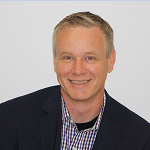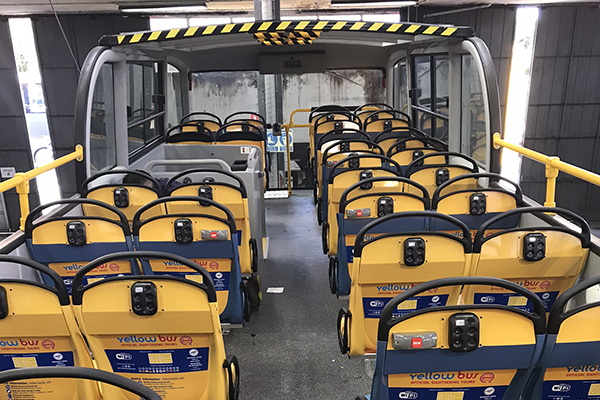* – This article has been archived and is no longer updated by our editorial team –
More than 30 million people around the world listen to AudioConexus tours year-round, in over 30 languages. On foot and in buses, boats, trolleys, trains, and trams. They’re also the first company to deliver multi-language tours on submarines and airplanes.
They also happen to make the only complete multilingual, multi-topical hardware, software and creative solution for tour operators worldwide looking for a distinctive edge to increase bookings through compelling, five-star user experiences.
Below is our recent interview with Jonathan Stanley, President and CEO at AudioConexus:

Q: Could you provide our readers with a brief introduction to AudioConexus?
A: We started AudioConexus in 2006 to tackle the problem of being on a sightseeing bus in a foreign destination with a driver-guide who doesn’t speak your language. Imagine being on a tour you paid for in an unfamiliar place and feeling completely lost because you don’t understand the guide’s words. We wanted to people to share a deeper, more collective sightseeing experience, while having more fun.
AudioConexus helps people feel connected to a destination’s home-grown flavor, its landmarks, culture, history and ecology through engaging stories, creating narratives that provide story-listeners with more meaningful shared experiences – in their chosen language.
That’s why we specialize in creating story-driven, GPS automated, multi-language tours for sightseeing companies around the globe.
 Recommended: Nobul Aims To Improve The Real Estate Buying And Selling Experience For Both Consumers And Industry Professionals
Recommended: Nobul Aims To Improve The Real Estate Buying And Selling Experience For Both Consumers And Industry Professionals
Q: What are the changes you are making in your industry?
A: Today, we are delivering the best GPS multimedia platform in the world, after introducing a new line of Navilution tour products earlier this year. Our GPS commentary solutions are designed to help sightseeing operators increase ridership, perform better and achieve more.
When we started on our new product development journey two years ago we had two goals: One, to help our customers realize their full potential by acting on Voice of Customer viewpoints throughout the development lifecycle and two, designing products for emerging market trends. To achieve this goal, we assembled a team of top talent, from engineering, industrial design, and user experience design, all coming together to bridge the industry gaps between design and engineering while providing people with better access to engaging content.
One of the key changes we introduced is TrueTime Passenger Analytics, allowing sightseeing operators to instantly collect, analyze and share seatback analytics in the cloud so they can make better sales and marketing decisions. Companies can really get competitive advantage out of analytics. We learned through our Voice of Customer work that sightseeing companies wanted additional strategic value from our solutions and a more centralized approach to managing content and data.
Q: Why do you mean when you say bridging industry gaps between design and engineering?
A: When we looked around our space, we saw that our industry lacked a design-centric focus on products. Our industry has been focused on solving the technical problems without ever solving the human problems – like how a product feels when you touch it. We wanted to do something about that.
We recognized that good design impacts the end user experience in both form and function. In practical terms, you don’t buy a functional chair that’s poorly designed or an uncomfortable chair because it’s beautiful. The same goes for technology. A strong design focus means you’ve got to be empathetic, developing a deeper understanding of users while sharing ownership in new ideas. We wanted to go beyond a purely mechanical and functional approach to innovation. Because when you think about the best products in the world, design is about heart; it’s about emotions, values, senses – and feelings.
Q: Why did you move away from the industry standard passenger interface with the introduction of More Info?
A: That’s a good question. Our researched showed us that today’s passengers want choice and value, and they want more control over their experience. This is easy to understand but much more difficult to deliver. How do you create that stickiness, that engaging tour experience that inspires someone to recommend to a friend? It is really about personalization.
Multi-language tours are made up of stories on a route and triggered by a GPS location. Right now, everyone in our space is saying here – listen to our content, this is what we’ve got to give you whether you like it or not. So, imagine getting on a tour and you’re interested in architecture. There’s really no way to give you any options for architecture while you’re on a sightseeing tour unless the story was already produced. This is a missed opportunity to give people what they really want.
We have introduced the world’s first More Info button, designed to deliver secondary levels of information while giving people choices to learn more about what interests them. Hop on, hop off tours can share things to do at each stop creating added value perfectly aligned with individual’s wants and needs. With “More Info” analytics, sightseeing companies will have key insights into usage and engagement, revealing language-specific behavioural trends. It’s really about changing your frame of mind and thinking about how you can create sightseeing experiences that go a step further by adding customer value and giving people the opportunity to choose what’s most relevant to them.
 Recommended: OPTIZMO Helps You Streamline The Collection, Storage And Distribution Of Your Consumers’ Opt-Out Preferences
Recommended: OPTIZMO Helps You Streamline The Collection, Storage And Distribution Of Your Consumers’ Opt-Out Preferences
Q: What’s next for AudioConexus?
A: While we’ve done a great job of removing cultural and language barriers, as a community we need to get better at removing access barriers. 15% of the global population — over 1 billion people — are living with some form of disability.
With populations’ rapidly ageing, it is more important than ever that we provide sightseeing companies with solutions that help them realize their full potential.
That is why we had to be the first company offering GPS commentary systems to step up and be accountable for designing products that are more accessible. This new direction for AudioConexus is about giving passengers more choices in the content they want to listen to – as well as making accessibility improvements for social inclusion.
We have been fortunate to have partners at our side that contributed their time and expertise to help us design better products. The Canadian National Institute for the Blind helped us with finger orientation feedback and consulted on braille for our Seatback Controllers. The Canadian Hearing Society is helping us with ASL and captioning. We have included features for textual content and sign language tours using video, and we offer listening accessories for the hard of hearing.
We know we have more work to do – and our product roadmap includes the design and development of new features as we strive to create better access for people taking sightseeing tours. We are a big believer in Tourism for All, where tourism is enjoyed equally by everybody, regardless of anyone’s abilities.

